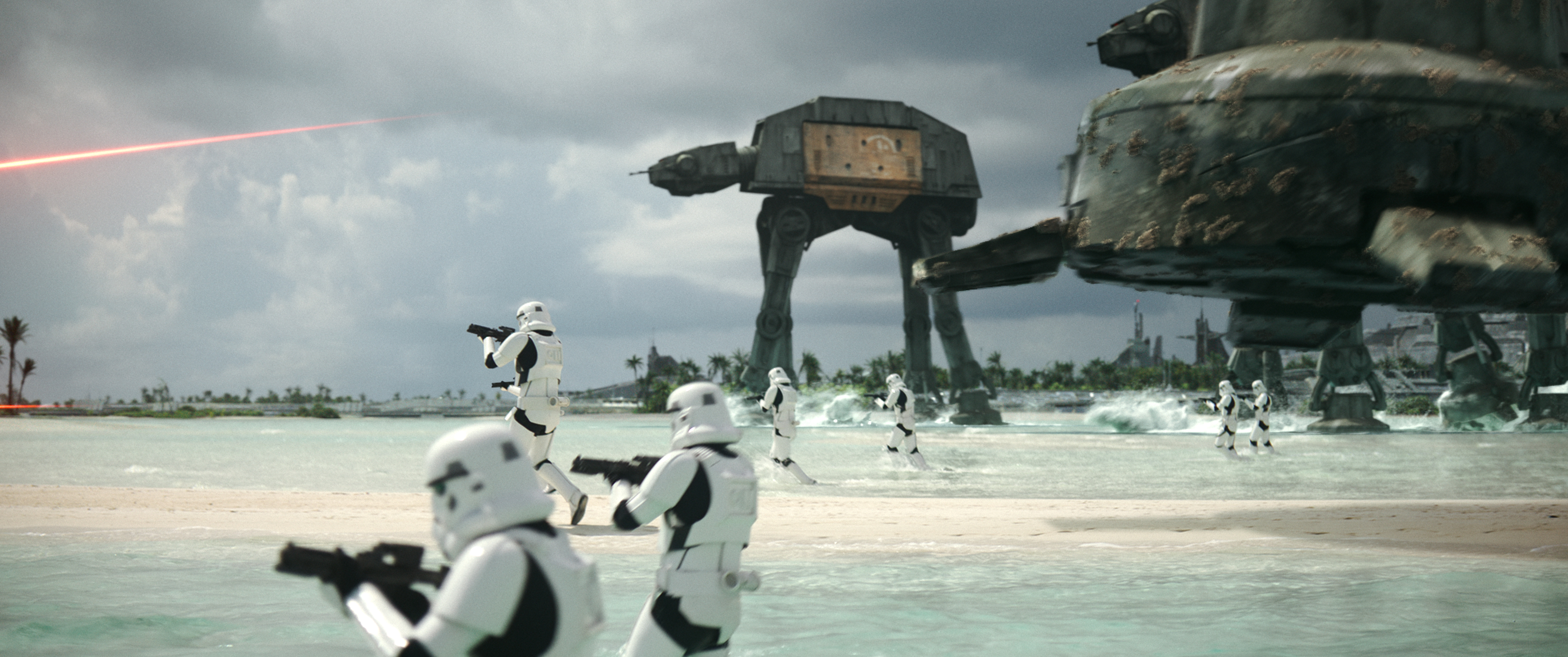A few weeks ago Disney’s newest take on the Star Wars franchise, Rogue One: A Star Wars Story, arrived in theaters as a box office smash, making it the second biggest December opening of all time (behind The Force Awakens) and well-received by critics, garnering an overwhelming line of positive reviews. However, what makes Rogue One such a major landmark for fans is just exactly how much it ties into the original Star Wars film, both in story and visual artistry. Director Gareth Edwards, as well as the visual effects team at Industrial Light and Magic, wanted to ensure that the visual look and feel of Star Wars blended seamlessly into new frontiers that Rogue One charters into.
In order to do that, there were a lot of challenges that ILM and Lucasfilm would encounter. Primarily, how do you recreate the retro-futuristic look that George Lucas’s low-budget vanity project had in the 70s while making the movie feel modern and unique? Following in the same steps that the team had put in place when tackling the new film, there was this sense of maintaining a perfect balance between creating CG-characters and models yet still preserving the tangible practical feel of the original trilogy. Arguably, one of the largest flaws of Lucas’s prequel trilogy is that while the CG was groundbreaking for its time and Lucas was a pioneer in experimenting new filmmaking types, but the prequels lacked a sense of tangible approach. Instead, looking back at the prequels, its elements feel flat and unrealistic, and it fails to maintain that real sense of story that his original trilogy did. The world of Star Wars, when at its best, feels immersive and real, allowing the audience to get lost within the adventure and the world of these characters on-screen. The misplacement of bad CG or even removing the look and feel of Star Wars would only impact the series once again, and Lucasfilm is trying to ensure they don’t make the same mistakes once again.
That’s why when approaching Rogue One: A Star Wars Story, the priority for the team was very much that it is ensured that the look and feel of the film look as realistic, tangible and actually practical as possible. This helped in the creation of build physical puppet creatures that are seen throughout the film. Like many of the Star Wars films before it, some of the most impressive things about it are in the small details. In an era where practical effects often become replaced by CG-models and effects, it’s an impressive feat to see a studio like Lucasfilm still make it a priority to push the innovation of their company to create models, sets and characters that are very much real and physical.
The look of the sets and technology within also capture the similar technology that was in the original trilogy. Save a few exceptions, almost all of the technology and recreated sets fit the style and format that the original trilogy did, right down to the design of Yavin 4 and the Death Star Command Center. In order to not create inconsistencies between the two films, everything about the existing sets have to be dressed to detail, even as far as going to ensure that the cast maintained that 70’s style look and feel that fit that futuristic movie. The result is an impressive blend of classic nostalgia and the ability to take something old and make it feel fresh and new again.
Although, while we boast about how Rogue One continues the legacy of Star Wars‘ groundbreaking practical effects, it actually holds a landmark milestone in something completely different: Rogue One is a showcase of the unbelievable possibilities that CG can do for a film. Yes, we’re referring to the incredible, if not slightly creepy, digital resurrection of British actor Peter Cushing in his role of General Moff Tarkin. Yet the fact that Cushing has been dead for over twenty-five years, he delivered one of the best performances within Rogue One, thanks to the use of CGI by ILM. The use of bringing back Tarkin in CG form is not something new to Hollywood, but it’s one of the first films to carry something as large as this out on this grand of a scale, leaving the future of Hollywood’s use of CG in question — not to mention raise an endless amount of questions about the ethics of filmmaking in the modern era.
Like many of the Star Wars films before it, Rogue One is all about maintaining the stylistic integrity of the franchise while looking to the future and pushing the innovation of cinema further than ever before. Rogue One is a perfect and stunning blend of both practical effects and CG visuals that create a perfect blend of what feels real and what you wish you didn’t know could feel so real. Rogue One is filled to the brim with ambition and creativity and shows that as Star Wars will continue to be a leader in the visual artistry of Hollywood and a showcase of the capabilities of what visual artistry can do, they’ll always keep one foot in the past while looking to a promising and thrilling future.

